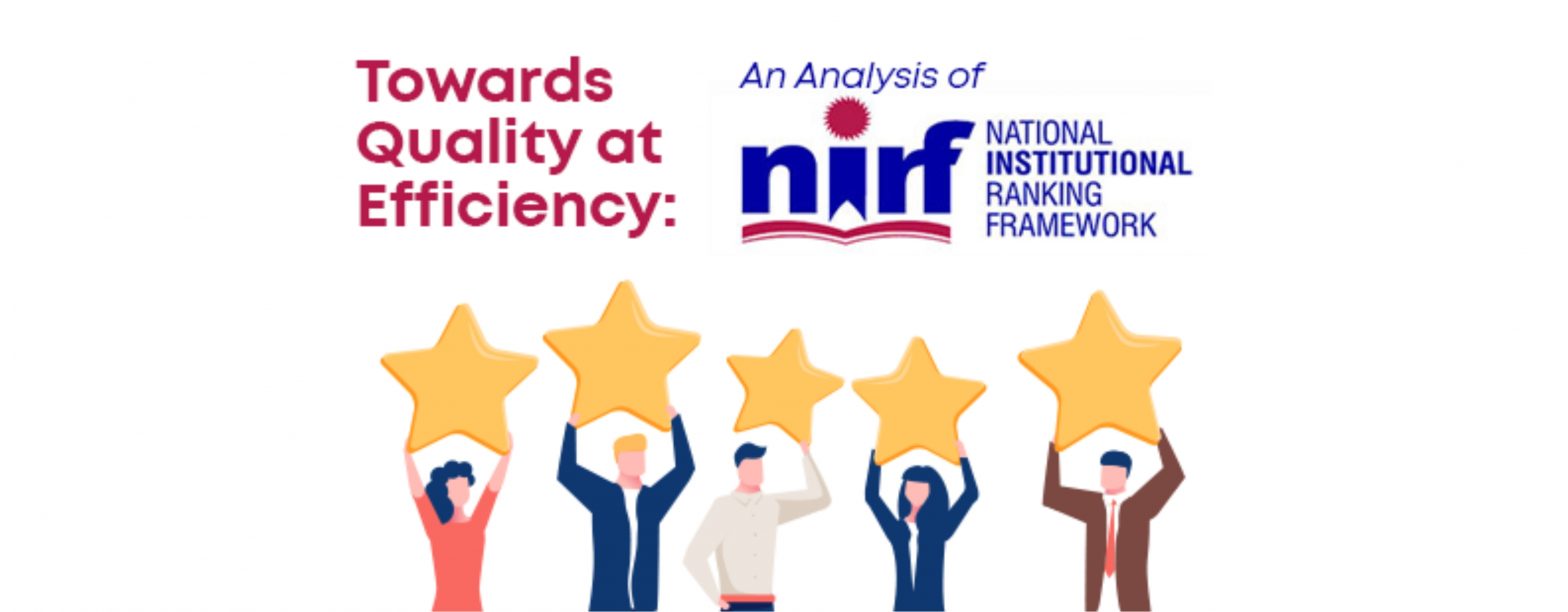Vishwakarma Institute of Technology, Pune has yet again been ranked by the National Institutional Ranking Framework (NIRF) amongst the top 200 engineering colleges in the country. Earning a top NIRF ranking is not just personally gratifying to us, it is also a validation of our hard work as a team, and our unwavering commitment to excellence. The day of the announcement of ranking is full of nervousness and suspense for our entire team, similar to what most students experience when they get their exam results. After the announcement, as the dust settles on the jubilations, we sit down to introspect with our leadership teams. We analyze what went right and identify the areas we can improve upon. This year was no different. The only difference being, we now have the ranking data of the last 5 years to analyze and pore over.
Besides creating a healthy competitive culture amongst universities and colleges to outperform each other, the ranking system offers parents, students, and other stakeholders a neutral and all-inclusive perspective about why and how to choose a particular course, college, or university. It also allows recruiters to identify institutions where the best human talent in the country is nurtured and fostered.
One important parameter of the NIRF ranking system is Teaching and Learning Resources (TLR), as it carries 30% weightage. A Sub Component of TLR is Financial Resources and Utilization (FRU). It means that the ranking system allots more points if the money spent per student on capital and recurring expenditure is more. We spare no expense in the development of our students, and our ranking validates our unstinting commitment towards excellence.
Another parameter of NIRF is Outreach and Inclusivity, with a sub-component seeking the number of economically and socially challenged students (ESCS). In effect, the greater the number of students whose fees are fully sponsored by the institutes / University, the greater the points allotted to the institute. Our high ranking reflects our commitment to an inclusive model of education.
I am a strong adherent of the Industrial Philosophical maxim – “Quality comes at Cost”. The parameter of FRU is quite relevant, therefore, to measure quality. Moreover, in a country like ours where the disparity in income levels is huge, socially inclusivity is not an option but a necessity. ESCS compliments FRU perfectly, therefore, and we stand promise bound to excel on both fronts. It is a fact too, however, that the current system of FRU and ESCS is biased towards Government Universities and Colleges. They have the financial backing of governments to fund their capital and recurring expenditure and support economically challenged students. Unfortunately, the efficiency of these systems is seldom measured. Government budgets today are more limited than ever before. It is important to improve the return on investment on every penny we spend. Hence, it would be pertinent to change our ranking parameters to measure efficiency, instead of the ability to spend. The Pandemic has forced a change in priorities within our budgets and financial planning. Expenditure on hygiene and safety has increased and ways are sought to reduce our fixed costs because revenues are uncertain. Lay-offs and suspension of growth projects are now rampant since sustenance is the primary priority now. Therefore, I think ‘Quality at Efficiency’ systems rather than ‘Quality at Cost’ systems must be promoted. Efficiency does not mean cost. It means the ratio of output over input. An organisation that gives better output performance with the same or fewer input resources needs to be appreciated more.
In this spirit, we are constantly engaged in the quest of improving the performance of every student and maximising potential while ever optimising our resources.
Bharat Agarwal
